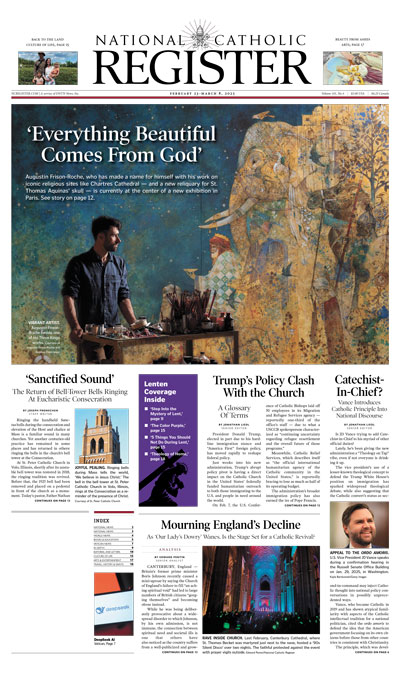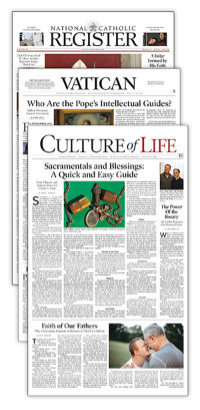Catholics Make Their Voices Heard
EDITORIAL: Both choices sent a clear message. On Election Day, Catholic voters delivered a clear message of their own.

When Vice President Kamala Harris broke with tradition and snubbed the Archdiocese of New York’s invitation to attend the Al Smith Dinner, Cardinal Timothy Dolan urged her to reconsider, good-naturedly noting that the last presidential nominee to snub the iconic charity fundraiser was Walter Mondale, who went on to lose 49 of 50 states in the 1984 Election.
“I don’t want to say that there’s a direct connection there,” he said, smiling.
Cardinal Dolan’s now-widely memed allusion to Ronald Reagan’s landslide now seems prescient, in the wake of Donald Trump’s overwhelming victory on Nov. 5. In the end, Trump easily won the electoral and popular votes, triumphing in all seven battleground states.
For Harris and the Democrats, it was a shocking and devastating defeat, one made possible, in part, by Trump’s surprisingly strong showing among Catholic voters. Exit polling showed that as much as 60% of Catholic voters favored Trump, a striking reversal from four years ago.
It’s tempting to blame Harris’ radical abortion stance for her poor performance with Catholics, not only because it’s diametrically opposed to the Church’s clear-eyed teaching on the sanctity of life, but also because it was the only substantive policy position she had to offer.
The reality, though, is that most Catholics who voted for Trump did so for reasons that had nothing to do with their faith. As with voters overall, concerns about inflation and the porous U.S. border are what swung them Trump’s way. It’s likely that relatively few Catholic voters were aware of Harris’ absence at the Al Smith Dinner, her public disdain for the Knights of Columbus or even her refusal to consider a religious exemption for medical professionals opposed to abortion. (They’d have known all that if they subscribed to the Register and read our “Voter’s Guide,” just to say.)
This year, as in past elections, there was a good deal of skepticism about whether there even is a “Catholic vote.” There is certainly no such thing as a Catholic “bloc,” since Catholics long ago stopped acting in lockstep, having thoroughly assimilated ourselves into American society, for better or for worse. Even Catholics who attend Mass and go to confession on a regular basis (a better measure of how important a role their faith plays in their everyday lives than simply identifying oneself culturally as a Catholic) espouse a wide range of political views.
Perhaps the real value of looking at Catholic voters is rooted in the universality of our Church. Here in the United States, we are spread throughout the country and represent every race, ethnicity, age, income level and state of life. As such, we provide a handy snapshot of the general electorate. That means a candidate who rates poorly with Catholic voters is likely to run into real problems getting elected.
This wonderful diversity adds important nuance to any fuller analysis of the Catholic vote, as several key subgroups — Latino men, working-class Latinos in the Rust Belt, married women, Catholics without college degrees and churchgoing Catholics — all had a critical impact on the final vote.
Donald Trump understood this. It’s one of the reasons he chose JD Vance, an articulate Catholic convert who proved his value in the campaign’s homestretch, as his running mate. Harris, in contrast, opted for Tim Walz, who rejected the Catholic faith of his youth and championed radical views on gender ideology and unrestricted abortion sharply at odds with the Church’s teachings on human dignity.
Both choices sent a clear message. On Election Day, Catholic voters delivered a clear message of their own.
- Keywords:
- catholic voters
















